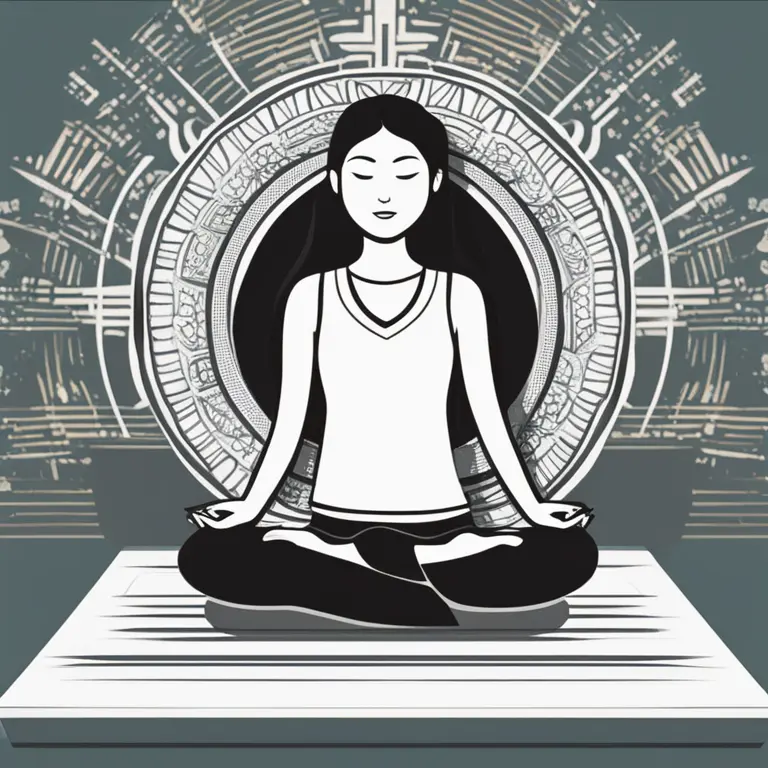
Optimal Meditation Techniques for Students
Explore various meditation methods suitable for students to enhance focus, reduce stress, and improve academic performance.
article by Hina Kurosawa
Introduction to Meditation for Students
In the bustling life of academics, students often find themselves struggling with stress, anxiety, and a lack of focus. Meditation is a powerful tool that can help students navigate the challenges of their educational journey. The best meditation practices for students are those that promote relaxation, sharpen concentration, and can be seamlessly integrated into a busy schedule. In this article, we’ll explore effective techniques that cater to the unique needs of learners in 2024 and beyond.

Mindfulness Meditation
One of the most accessible forms of meditation for students is mindfulness meditation. This practice encourages participants to remain fully present in the moment, observing thoughts and sensations without judgment. Students can practice mindfulness for a few minutes between classes or during study breaks, which can lead to reduced stress levels, improved memory, and enhanced cognitive function. The simplicity and flexibility of mindfulness make it especially suitable for the student lifestyle.

Guided Visualization
Guided visualization is another fitting meditation practice for the student body. It involves envisioning positive outcomes and peaceful scenarios, which can be particularly beneficial before exams or presentations. With countless audio resources available online, students in 2024 can easily find guided sessions that resonate with them, helping to build confidence and reduce performance anxiety.

Mantra Meditation
Mantra meditation involves the repetition of a word or phrase to help focus the mind. Students can choose a mantra that inspires motivation or calm, reciting it during their meditation practice. This repetitive process can help inculcate a sense of inner peace and create a mental environment conducive to learning and retention.

Yoga Nidra
For students grappling with sleep issues, Yoga Nidra, a form of guided meditation performed lying down, can provide relief. This "yogic sleep" induces a state of deep relaxation, where the practitioner remains aware. Yoga Nidra can be particularly effective in improving sleep quality, which, in turn, supports overall academic performance by keeping the mind sharp and energized.
Breathing Exercises (Pranayama)
Breathing exercises, or Pranayama in yogic tradition, are an excellent way for students to regulate their energy levels and mood. Techniques such as the 4-7-8 breath can be performed anywhere and require only a few minutes. Pranayama helps manage stress, increase mental clarity, and enhance focus, making it a practical tool for students before studying or attending a lecture.
Body Scan Meditation
Body scan meditation is a method where students focus on each part of their body sequentially, calming the mind by releasing tension in a controlled manner. This practice is especially effective for those who spend long hours sitting or who may experience physical discomfort due to stress. By practicing body scanning, students can maintain better awareness of their physical well-being, promoting a healthier learning experience.
Published: 1/14/2024
Modified: 1/15/2024
More predictions
Come back here soon to learn more about yourself and your future


Healing Through Mindfulness: Meditation & Trauma Recovery
Mindfulness meditation offers a powerful tool for individuals seeking solace and healing from traumatic experiences. Discover how this practice can aid in the journey towards inner peace.


Easing Loneliness with Meditation
Discover how mindfulness meditation can provide solace and connection to mitigate feelings of loneliness, enhancing emotional and mental well-being.


Discovering Life with Meditation Mantras
Delve into the transformative power of meditation mantras to harmonize your mind, body, and spirit for a tranquil existence.